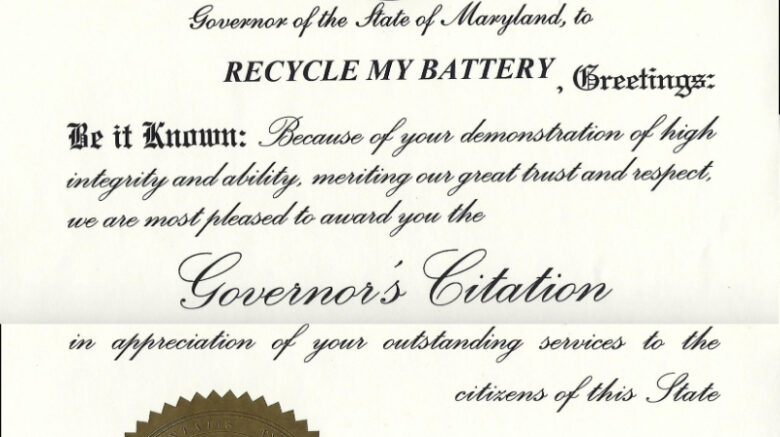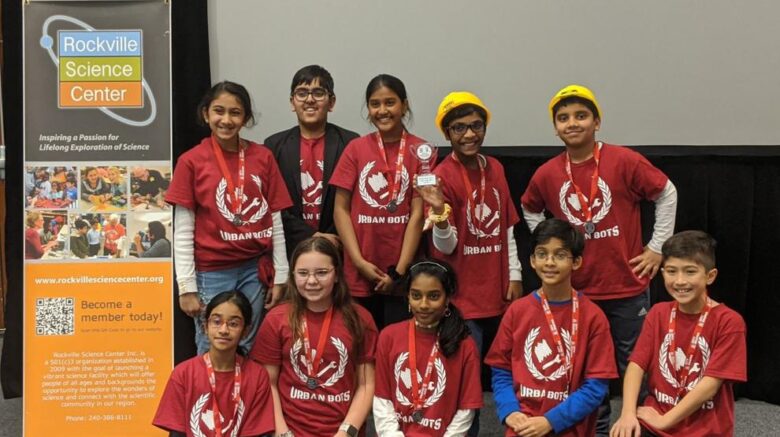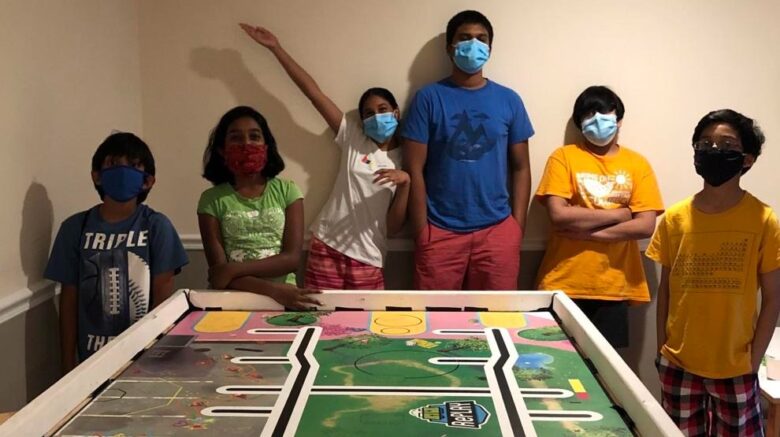Maryland Governor’s Citation to Recycle My Battery

Made for Students – Run By Students
Made for Students – Run By Students

Mihir Kumar, student from Urbana High School, is now the current Maryland Chapter Lead and National Executive Board Leader for Recycle My Battery.
Rohit S. Chintala, a student from the class of 2025 at Urbana High School won the 43th Annual High School Mathematics Competition.

The rookie robotics team from Urbana is headed to the state championships Feb. 23. In the front row, from left: Rhea Ramesh, Laila Gilsinn, Nainitha Chalamalasetty, Mihir Kumar and Roi Mahns. Standing, from left: Vidhushi Kondabathini, Praneel Pandit, Aditi Senthikumar, Vidhyuth Viswanathan, Tanish Umrikar. The team’s high school mentors are Abhi Senthilkumar, Sujal Umrikar, Geethika Kondatathini and Arush Kumar. Coaches are Senthil Ramaswamy and Vishy Mahadevan, and team administrator is Amit Kumar.
URBAN Bots, part of the Rockville Robotics Inc. team network (https://rockvillerobotics.org/teams.html), is a rookie robotics team from Urbana that competed in the ongoing FIRST Lego League competition and qualified for the Maryland FLL State Championship at UMBC on Feb. 23. They were sponsored in part by Art of Problem Solving and Booz Allen Hamilton.
FIRST Lego League is the most accessible, guided, global robotics competition, helping students and teachers to build a better future together, according to the website. The program is built around theme-based challenges to engage children ages 9 to 16 in research, problem solving, coding and engineering. The foundation of the program is the FIRST Core Values, which emphasize teamwork, discovery, and innovation.
FLL has four parts consisting of a robot competition, robot design evaluation, innovation project and demonstration of how FLL core values have guided the team through the season. The URBAN Bots team, consisting of 10 Urbana area elementary and middle school students, worked over the last six months on this year’s “City Shaper” challenge. They were mentored by three Urbana High School students and two parent coaches.
For the robot competition, the team learned how a Lego EV3 brick, motors, sensors, attachments and Mindstorms program blocks can be combined to make smart robots. At the competition, each robot has to successfully tackle as many pre-defined missions on the competition table as possible within a 150 second run. Throughout the season, they designed and tested attachments and programs that helped their robot accomplish multiple missions reliably. The URBAN Bots robot and team placed third out of 23 teams. Their simple, efficient, and repeatable design earned praise from the judges and earned them second place in the robot design evaluation part of the competition.

The Couch Botatoes, a robotics team from Urbana and Frederick, places second in the First Lego League state championships in April. Team members pictured, from left: Vansh Kumar, Nainitha Chalamalasetty, Aditi Senthilkumar, Abhi Senthilkumar (high school youth mentor), Praneel Pandit and Mihir Kumar.
Couch Botatoes is a robotics team from Urbana and Frederick that competed in the Maryland First Lego League state championship in April. They were sponsored in part by Art of Problem Solving (AoPS), Gaithersburg. The team placed second among 21 teams in the synchronous group for the number of points they earned in the robot game competition. In addition, they placed second (championship finalists) overall as a result of their combined scores in the robot design, innovation project, robot game and core values sections.
First Lego League is built around theme-based challenges to engage children ages 9 to 16 in research, problem solving, coding and engineering. The challenge has four parts — robot competition, robot design evaluation, innovation project and demonstration of how FLL core values have guided the team through the season.
The Couch Botatoes team, consisting of five Urbana area elementary and middle school STEM enthusiasts, worked for nine months on this year’s RePlay challenge. They were mentored by Urbana High School student Abhi Senthilkumar and two parent coaches, Senthil Ramaswamy and Sesha Jupudi.
This year, the team had specific learning goals they set out to accomplish. Their base robot had a compact design with a clever adapter to quickly add and remove attachments that could accomplish a variety of pre-determined missions. Using color sensors, they were able to program their robot to reach the target locations on the game map and accomplish a variety of tasks to earn points. The team also developed attachments with built-in gear boxes to lift loads and drop blocks at various locations as dictated by the mission requirements. In the competition, the team scored the second highest number of points in their division (Group 2, Synchronous) and consequently earned second place in the robot game section.